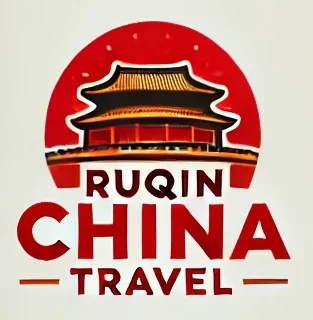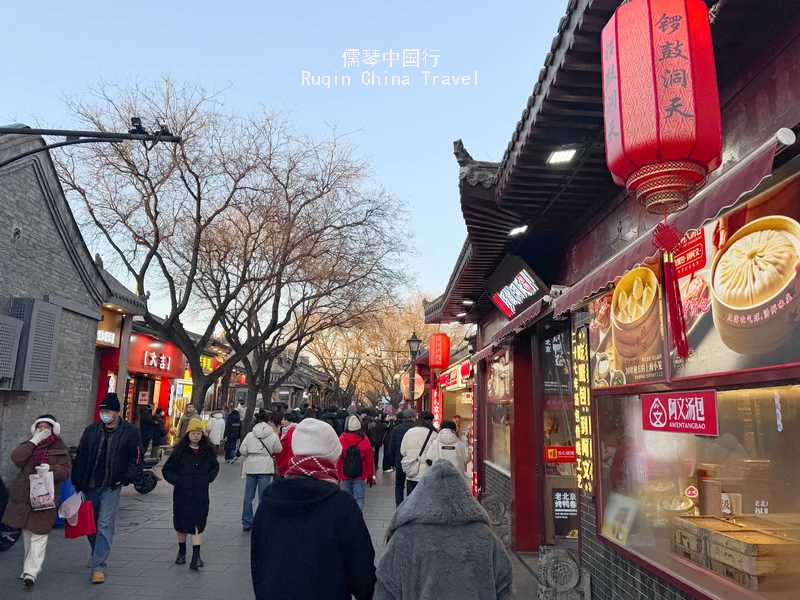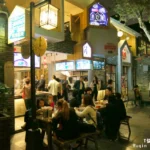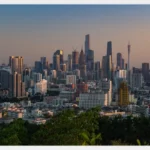Welcome to our Nanluoguxiang Hutong Travel Guide, where we take you through one of Beijing’s most captivating and historic hutongs. Nanluoguxiang (南锣鼓巷), also known as South Luogu Lane or Nanluogu Lane, is a narrow alley nestled in the heart of the Dongcheng District.
This charming hutong runs from the lively Gulou East Avenue in the north to Ping’an Avenue (Di’anmen Avenue) in the south. Stretching just 787 meters long and 8 meters wide, Nanluoguxiang Hutong is not just an alley—it’s a journey through time, with centuries of history and culture embedded in its lanes. In this guide, we’ll uncover the stories, sights, and experiences that make Nanluoguxiang a must-visit destination in Beijing.
1. The History of Nanluoguxiang
Nanluoguxiang’s name is tied to its unique geography. The history of this alley goes back to the Yuan Dynasty (1271 to 1368), when it was an important route in the city’s bustling capital. The alley stretches across a middle-high, north-south-low terrain, which was said to resemble the humped back of an old man. This gave rise to its original name—“Luoguo Alley” (罗锅巷) or “Humpback Alley.”
By the 15th year of Emperor Qianlong’s reign (1750), the alley’s name was officially changed to the more elegant “Nanluoguxiang,” which literally means “South Gong and Drum Lane.” This new name was chosen because it was a better-sounding homophone for “Luoguo Lane” (Humpback Alley), helping to avoid the less refined connotations of the original name.
Over the centuries, this vibrant lane evolved into a gathering place for Beijing’s elite. During the Ming and Qing dynasties, Nanluoguxiang became a cultural hub, where scholars, writers, and artists convened. Many of China’s most celebrated literary figures walked these lanes, leaving their mark on the alley’s rich cultural tapestry.
2. How to get to Nanluoguxiang?
Identify the Nearest Transport Option: Nanluoguxiang is located in the Dongcheng District of Beijing. The nearest transport options include subway, bus, or taxi services.
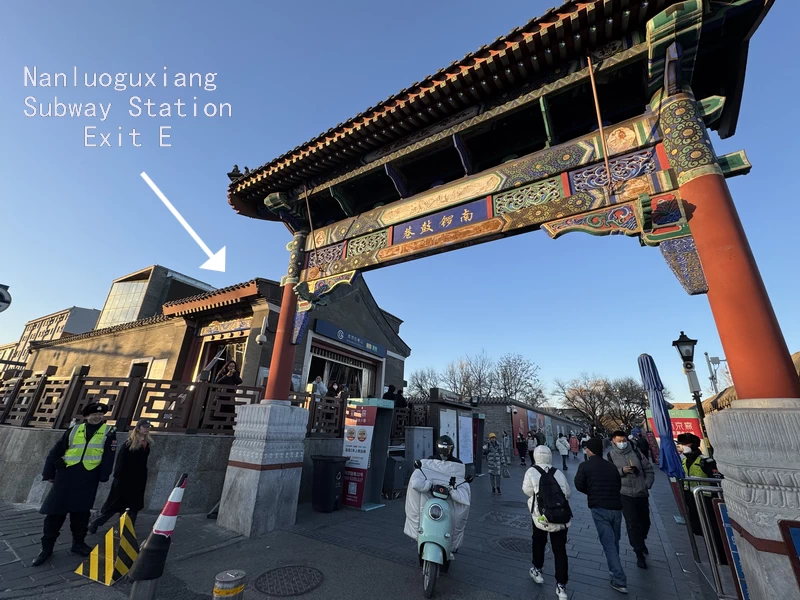
Choose Your Entrance:
Nanluoguxiang has two main entrances:
- The south entrance (from Di’anmen West Street)
- The north entrance (from Gulou East Avenue)
For convenience, it’s recommended to use the south entrance, which is closer to the subway station.
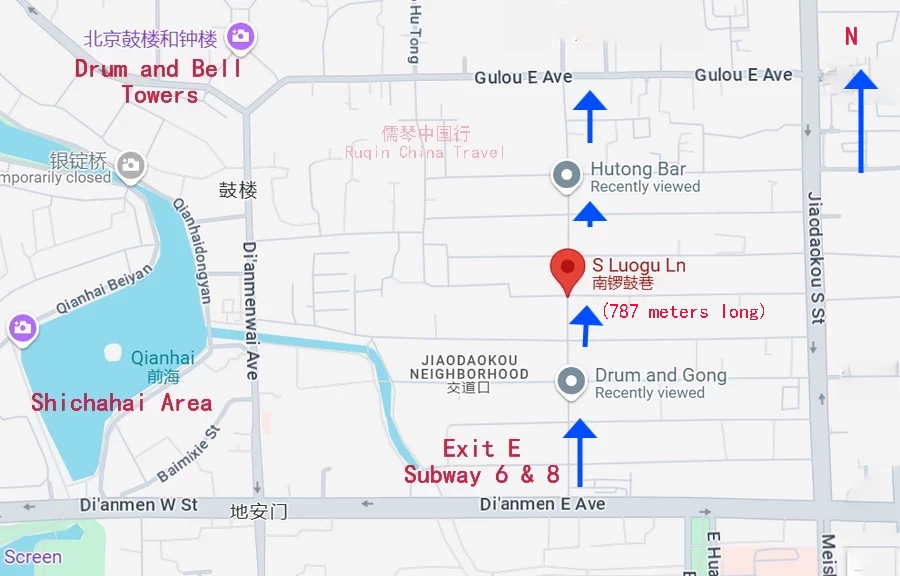
Subway Lines : Take Line 6 or Line 8 and get off at Nanluoguxiang Station (Exit E ). The Exit E is just on the southern tip of Nanluoguxiang Hutong.
Buses: Many buses pass through Nanluoguxiang. Look for bus stops near your location, and board a bus that passes by Nanluoguxiang. Get off at the Nanluoguxiang bus stop.
Take the Bus 3, 4, 13, 42, 60, 118, 612, Sightseeing Bus 3, get off at Nanluoguxiang station;
Take bus No. 82, 107, 124, 135 and get off at Baochao Hutong Station.
Taxi: Inform the taxi driver of your destination, “Nanluoguxiang” or “南锣鼓巷” in Chinese. It’s advisable to have the address written down or saved on your phone. Taxis are readily available throughout Beijing, and using a ride-hailing app like Didi can be convenient.
3. The layout of Nanluoguxiang
Main Alley (Nanluoguxiang)
At the heart of Nanluoguxiang lies a long, straight alley stretching approximately 787 meters from south to north. This pedestrian-only thoroughfare invites visitors to leisurely explore its vibrant shops, cozy cafes, and historic architecture on foot, making it a haven for those seeking an immersive cultural experience.
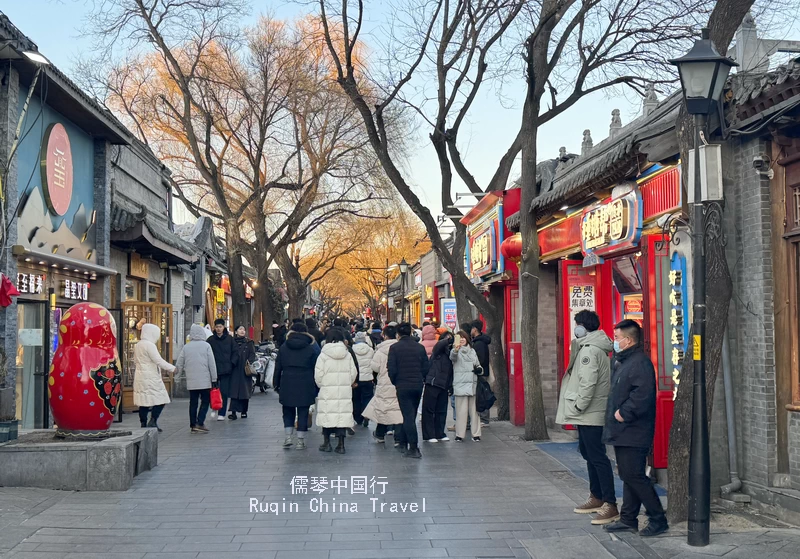
Side Alleys
Branching out from the main alley are 16 side lanes—8 on each side—arranged in a neat fishbone pattern. From above, the layout resembles a centipede, which is why Nanluoguxiang is also known as “Centipede Street” (蜈蚣街). These side alleys hold their own charm, often quieter and more intimate, offering a glimpse into the traditional courtyard homes and daily life of old Beijing.
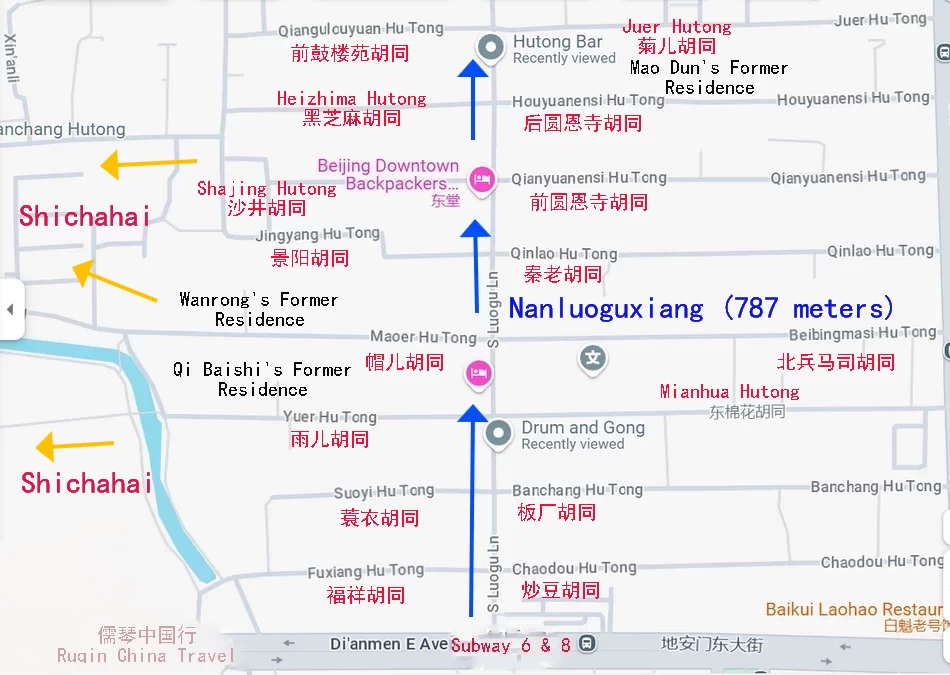
Wandering through this area, you’ll encounter a charming collection of side hutongs such as Fuxiang Hutong (福祥胡同), Suoyi Hutong (蓑衣胡同), and Yuer Hutong (雨儿胡同). On the eastern side, you’ll find others like Chaodou Hutong (炒豆胡同) and Banchang Hutong (板厂胡同), each with its own unique character and hidden stories.
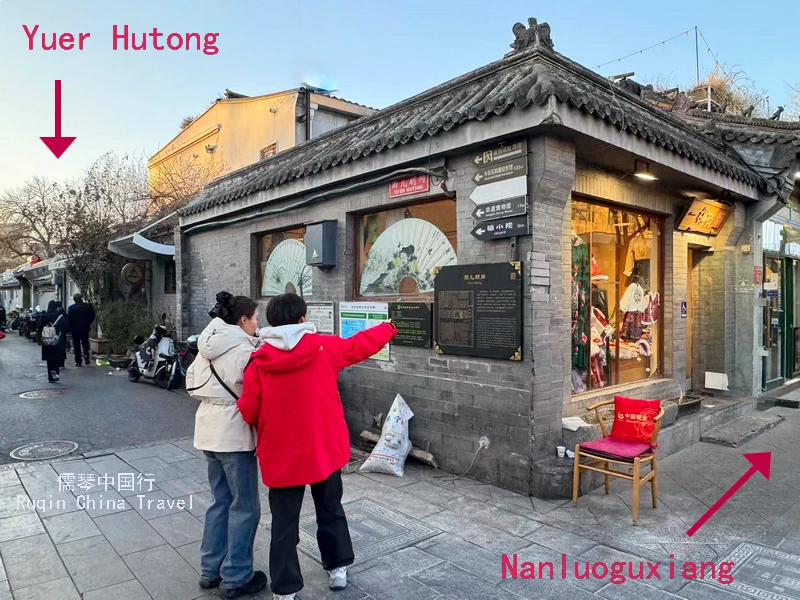
Interestingly, these narrow alleys didn’t even have names during the Yuan Dynasty. It wasn’t until the Ming Dynasty that names began to emerge, evolving over time to reflect the lives, trades, and history of the people who lived here. Strolling through these ancient pathways feels like stepping into a living museum, where every corner holds a piece of Beijing’s rich past.
4. Architectural Features of Nanluoguxiang
Nanluoguxiang’s architecture combines traditional Chinese, Western, and modern influences. As you walk through the alleys, you’ll notice gray-brick walls, tiled roofs, and red doors decorated with stone drum carvings. The colors—mainly red and black—echo the grandeur of the Forbidden City. They give the area a distinct and timeless charm.
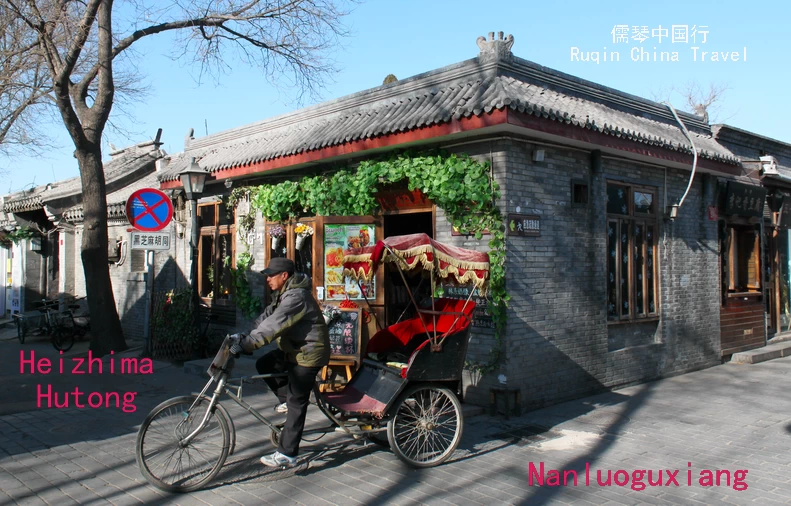
Even the rooftops tell stories of the past. Nobles lived under green-glazed tiles, symbolizing their status, while ordinary residents used black-glazed tiles. Every detail reflects the city’s rich history and cultural layers.
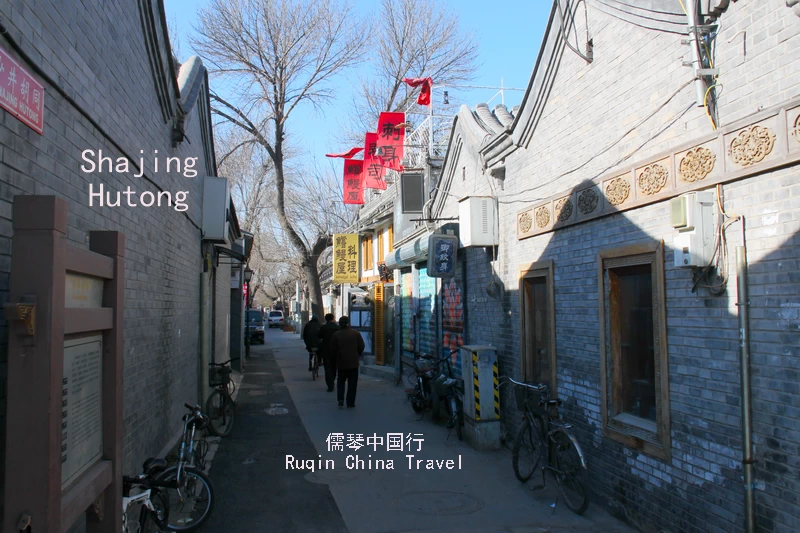
On both sides of the alley, you’ll find traditional Chinese siheyuan courtyards. These iconic homes, built in a square or rectangular layout, have buildings surrounding a central courtyard. Siheyuan provided families with peaceful, enclosed spaces for daily life.
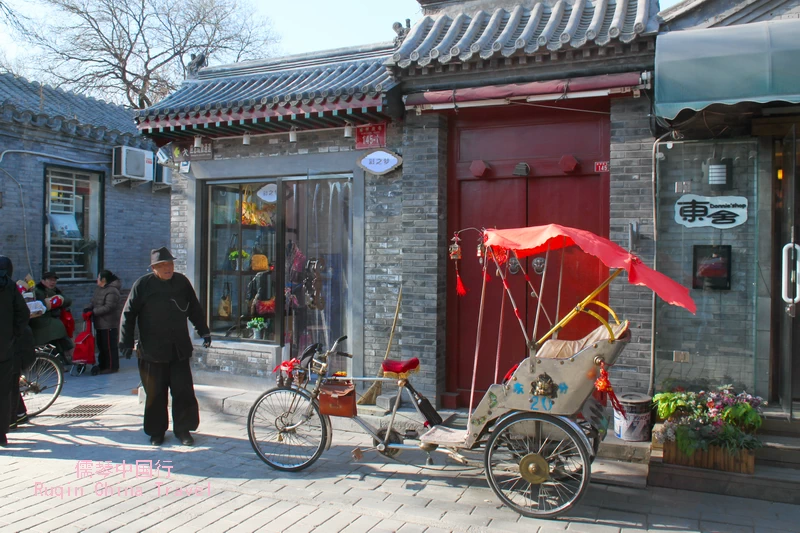
Nanluoguxiang was once the bustling center of Yuan Dynasty Beijing. Later, during the Ming and Qing Dynasties, it became home to aristocrats and famous cultural figures. Today, the street still preserves its historical roots.
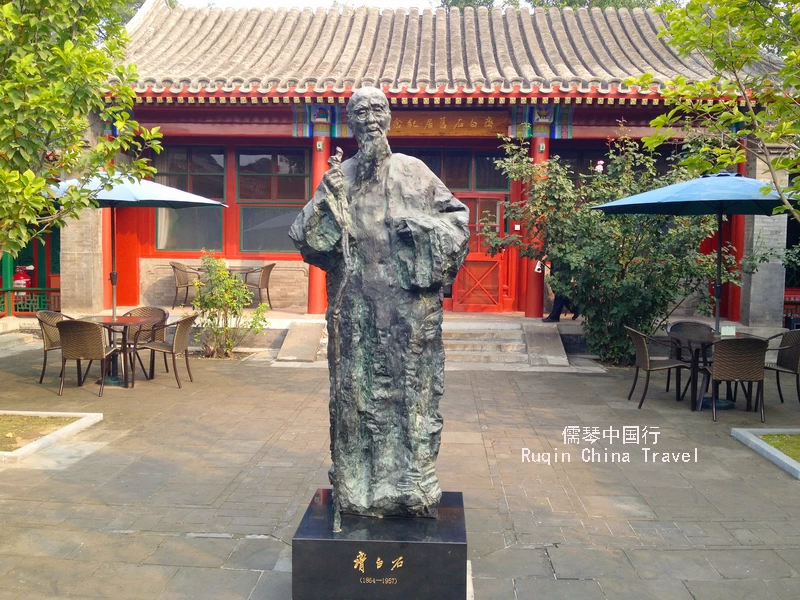
Landmarks like the Prince Sengge Rinchen Residence and Keyuan Garden continue to stand proudly. They offer a rare glimpse into the lives of Beijing’s elite from centuries past. Every building here has a story, making Nanluoguxiang a living museum and a must-visit destination for history lovers.
5. Where Tradition Meets Modern Creativity
Nanluoguxiang isn’t just a place to relive history—it’s a vibrant hub of modern culture and creativity. While its traditional courtyard houses and historic charm set the stage, the alleys are alive with energy from boutique shops, trendy bars, cozy cafes, and one-of-a-kind eateries. This is where Beijing’s past meets its dynamic present, offering visitors an experience that’s both nostalgic and refreshingly contemporary.
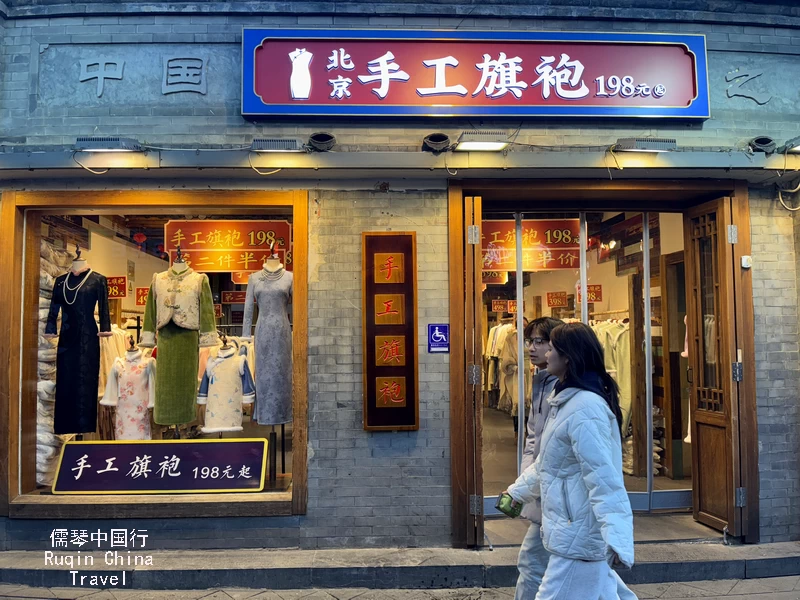
Food lovers will find plenty to indulge in. Local snack stalls tempt with classics like jianbing (Chinese pancakes) and candied hawthorn skewers, while unique eateries serve up a mix of Chinese, Western, and fusion cuisines. Whether you’re in the mood for dumplings or a gourmet burger, there’s something for every palate.
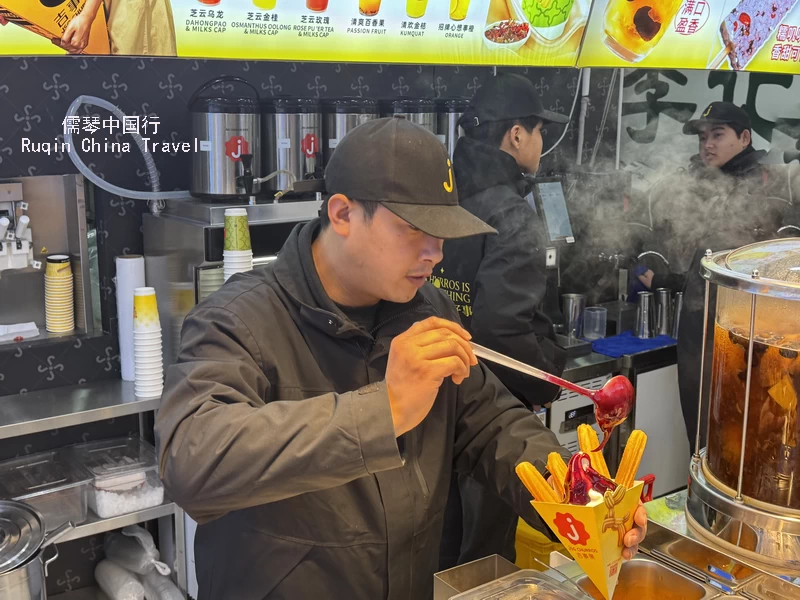
Bars and cafes here offer more than just drinks—they provide an atmosphere. You’ll find intimate wine bars, craft beer spots, and rooftop lounges perfect for unwinding. Meanwhile, the cafes, often tucked into renovated courtyards, exude charm and creativity, making them ideal for a coffee break or an Instagram-worthy photo.
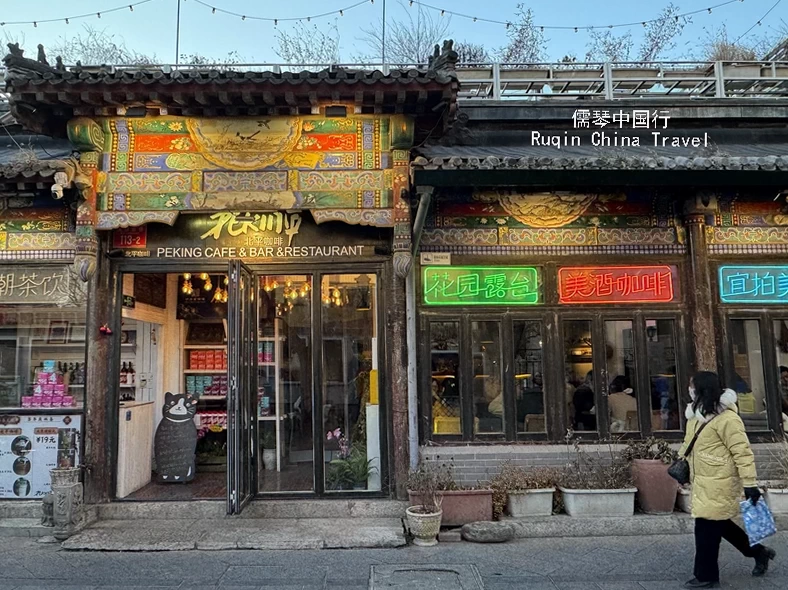
Art and creativity are everywhere. The walls are decorated with street art and murals, adding a splash of color to the alleys. Cultural events and pop-up exhibitions bring an extra layer of excitement, making Nanluoguxiang a magnet for locals and tourists alike.
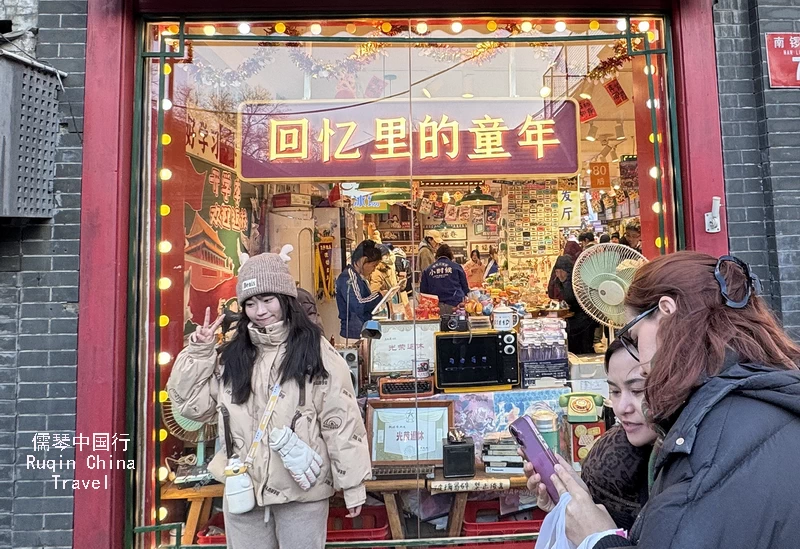
Nanluoguxiang is a place where tradition and modernity coexist effortlessly. From handmade crafts to contemporary fashion, from old courtyards to cutting-edge creative studios, it offers a unique cultural experience that you won’t find anywhere else in Beijing.
6. Best Time to Visit Nanluogu Lane
The best time to experience Nanluoguxiang is between 3 PM and 9 PM. As the afternoon sun begins to dip, the alley takes on a golden glow, creating a warm and magical ambiance.
By evening, the street comes alive with the energy of a vibrant night market. Lights twinkle, laughter fills the air, and the lively atmosphere invites you to explore its shops, food stalls, and hidden gems. Whether you’re enjoying the sunset or soaking in the evening buzz, Nanluoguxiang is at its most captivating during these hours.
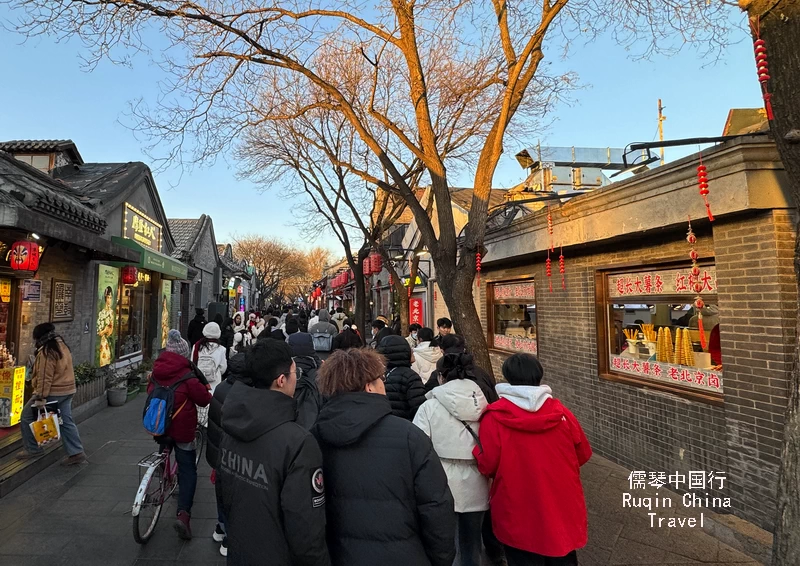
South Luogu Lane can get crowded, especially on weekends and holidays. To make the most of your visit, consider going during the early morning or weekdays to avoid the peak tourist times. This will allow you to fully immerse yourself in the experience without dealing with large crowds.
7. Hotels in and around South Luogu Lane
For a truly authentic Beijing experience, immerse yourself in the city’s historic hutong neighborhoods like Nanluoguxiang and Shichahai Areas. These charming areas capture the soul of Beijing, with their narrow alleys, traditional courtyard homes, and a glimpse into the city’s local way of life.
Stay in one of the area’s boutique hotels, such as The Orchid Hotel or Shichahai Shadow Art Performance Hotel. These accommodations offer cozy, intimate atmospheres that perfectly match the historic surroundings. Whether you’re sipping tea in a hidden courtyard or enjoying modern comforts in a traditional setting, you’ll feel completely immersed in the spirit of old Beijing.
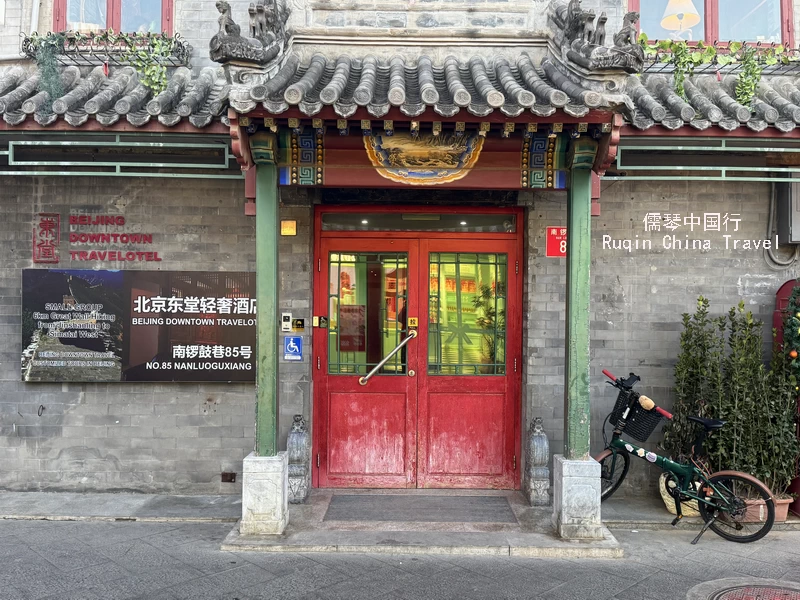
The location couldn’t be better. These hutong areas are not only rich in culture but also just steps away from major attractions. Explore Shichahai’s lakes, enjoy Nanluoguxiang’s vibrant shops and cafes, and return to your hotel for a quiet retreat.
Major Hotels in Nanluoguxiang and Shichahai Areas:
| Hotel Name (Chinese/English) | Brief Introduction |
|---|---|
| Beijing Downtown Travelotel 北京东堂轻奢酒店 | Beijing Downtown Travelotel is located at No. 85 Nanluoguxiang, close to Houhai. It is an ideal accommodation choice, especially for backpackers and travelers seeking a unique lodging experience. |
| 北京什刹海皮影文化酒店 Shichahai Shadow Art Performance Courtyard | Beijing Shichahai Shadow Puppet Culture Hotel is located at No. 24 Songshu Street, Xicheng District, Beijing, near Prince Gong’s Mansion Garden and Nanluoguxiang. |
The Orchid Hotel | The Orchid Hotel is located in the heart of Beijing’s traditional hutongs, offering a peaceful and stylish retreat. The hotel is situated at No. 65 Baosha Hutong, within close proximity to the Drum Tower and Nanluoguxiang, making it convenient for visitors to explore the traditional charm of Beijing. |
| 北京花间堂·后海酒店 VUE Hotel Hou Hai, Beijing | Located in the Houhai/Nanluoguxiang area, just 330 meters from Shichahai. Highly rated at 4.9 with 2,440 reviews, the hotel offers comprehensive facilities, ideal for families and couples. |
| 乐盟酒店 Lemeng Hotel (Houhai Drum Tower Branch) | A historical hotel built during the Ming dynasty, featuring a unique courtyard design. Includes amenities such as a tea room and parking, ideal for culture and history lovers. |
| Shichahai Sandalwood Boutique Hotel 什刹海紫檀文化酒店 | Offers a traditional stay with modern comforts, blending Beijing’s historical charm with high-end service. Situated near Shichahai’s attractions. |
| Beijing Hutong Culture Inn 北京胡同印文化酒店 | Provides a cozy and authentic experience in the heart of Beijing’s hutongs, offering easy access to Shichahai and local cultural landmarks. |
| Han’s Royal Garden Hotel 涵珍园国际酒店 | Features affordable rooms with essential amenities in a prime location, allowing guests to explore Shichahai conveniently. |
There’s something for every traveler here, from luxurious stays to budget-friendly options. With their unbeatable charm and convenience, these hotels make it easy to soak up the ambiance of Beijing’s hutong life while staying close to the city’s top sights.
8. Nanluoguxiang Nearby Attractions and City Walk
Nanluoguxiang is surrounded by some of Beijing’s most iconic attractions, perfect for adding to your itinerary. Just a short walk away, you’ll find the historic Drum and Bell Tower, where you can enjoy panoramic views of the city.
Nearby, the Shichahai Lake area, including the lively Houhai Bar Street and Yandai Xiejie Street, offers a mix of scenic beauty and nightlife. For those seeking spiritual sites, the stunning Lama Temple is also within walking distance.
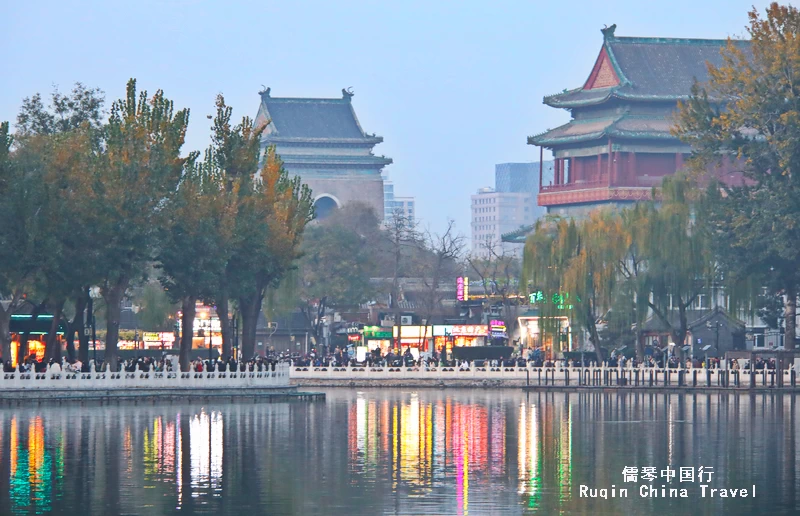
Looking for a peaceful retreat? Combine your visit to Nanluoguxiang with a stroll through Beihai Park, either before or after exploring the hutongs. The serene lakes, ancient pavilions, and charming bridges provide a quiet escape from the hustle and bustle.
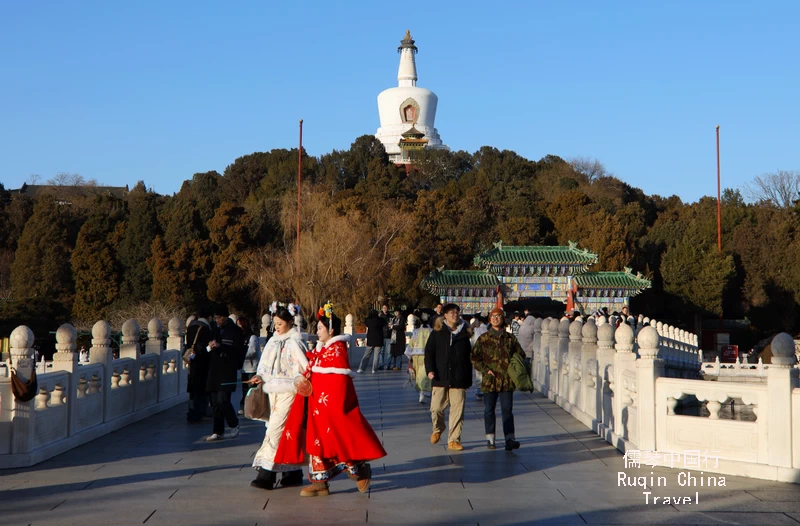
To make the most of your adventure, plan according to your preferences. Visiting on weekdays or during non-peak hours can help you avoid large crowds and enjoy a more relaxed experience. Keep a map or navigation app handy to help you find your way, and let the charm of Beijing guide your footsteps.
More Beijing Travel Guides
Planning your Beijing tour? Our “Beijing Travel Guide“ section offers essential advice to help you navigate the city like a pro. From transportation tips and local customs to insider recommendations for hidden gems, these travel tips will ensure you have a smooth, enjoyable, and unforgettable experience in China’s vibrant capital. Let us guide you through the best practices for exploring Beijing with confidence!
